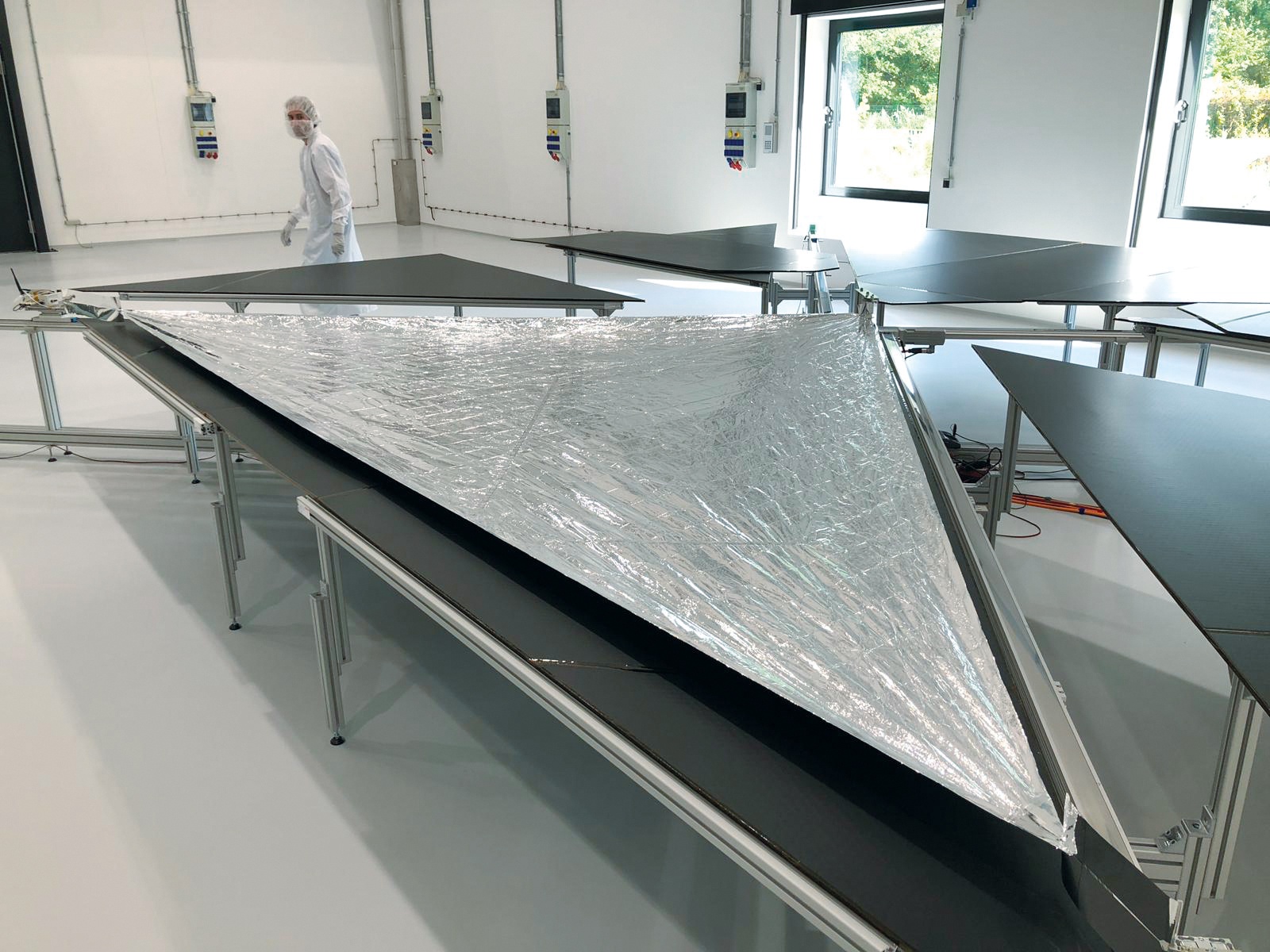The crew of NASA’s first Mars habitat simulation, CHAPEA 1, exited their Earth-based environment after 378 days on July 6 at 5 p.m. EDT. Greeted by friends, family, mission team members and project directors, the crew of four expressed gratitude and optimism about their time in isolation and the data collected, which will contribute to the future goal of putting boots on Mars.
Continue reading “Volunteers Complete a Simulated Year on Mars”The Space Station Now Has Blisteringly Fast Internet

NASA’s Space Communications and Navigation programme (SCaN) has demonstrated the first two way end-to-end laser relay system, deployed through an innovative network. To test SCaN, they sent data to the International Space Station at the impressive speed of 1.2 gigabits per second. Using bandwidth that would normally be reserved for more important communications, the chosen message for the test was a set of adorable images and videos featuring the pets of NASA astronauts and staffers.
Continue reading “The Space Station Now Has Blisteringly Fast Internet”Chinese Astronauts Just Repaired Space Debris Damage Outside the Station
A pair of Chinese taikonauts have completed an eight-hour spacewalk repairing damage to the Tiangong Chinese Space Station’s solar panels. It’s believed the damage was caused by tiny pieces of space debris, which impacted the solar wings and degraded their function. They performed a first repair spacewalk in December 2023 and completed the repairs with their second trip outside in March 2024. The Shenzhou 17 crew were the sixth group living in Tiangong and were relieved by the Shenzhou-18 team in late April.
Continue reading “Chinese Astronauts Just Repaired Space Debris Damage Outside the Station”27 to 78 cm of sea Level Rise Could be Locked in From Melting Greenland ice Caps

Recent climate research, published in the Nature Climate Change journal has confirmed that melting icecaps in Greenland will contribute a minimum of 27cm rise in ocean levels even if we collectively stop burning fossil fuels immediately. We have reached a “point of no return”. And what makes it worse is that this is the most conservative estimate, as it only factors the contribution made by the ice shelf in Greenland. Projections have also confirmed that overall planetary warming has exceeded the original estimates for global heating, and that we are in for a difficult millennium if drastic action isn’t taken immediately.
Continue reading “27 to 78 cm of sea Level Rise Could be Locked in From Melting Greenland ice Caps”China uses drag sail to clear up space junk successfully.
Scientists at the Shanghai Academy of Spaceflight Technology (SAST) have devised an ingenious way to combat the growing problem of space debris. The team fitted a drag sail to a Long March 2 rocket and successfully launched it in July this year. Rocket launches often leave discarded booster stages in low-earth orbit, adding to the pollution of near-earth space. The pilot testing for the sail came as a surprise to many space agencies when, a day after the rocket’s launch, the 25 square meters deorbiting sail was unfolded.
Should Low Earth Orbit be a protected environmental ecosystem?

An article published in Nature Astronomy makes a strong case to declare the orbital space around earth an ecologically protected environment. It was part of a submission to the US Court of Appeals in August last year and was filed by several organisations in response to license amendments granted by the FAA to SpaceX for Starlink satellites. To understand why this is so important, it may help to remember that orbital space is a “common” area, like “International Waters” in our oceans, so it is not currently protected by a single country or organization.
Continue reading “Should Low Earth Orbit be a protected environmental ecosystem?”The United States announces a stop to testing Anti-Satellite Weapons
The United States Government has declared that it will no longer be performing tests of Anti-Satellite (ASAT) weapons. In a public statement during a visit to the Vandenberg Space Force Base, Vice President Kamala Harris confirmed that this policy has the primary purpose of setting an example to other countries. It represents an important step in the direction of establishing “space norms” for all countries to follow.
ASAT weapons go as far back as the early years of the Cold War. According to the Naval Institute Guide to World Naval Weapons Systems, ASAT weapons were designed for strategic and tactical military purposes. Satellites have long been used by the military for navigation, communication, and gathering intel on enemy movements and activities through sophisticated satellite imaging: Spy satellites.




